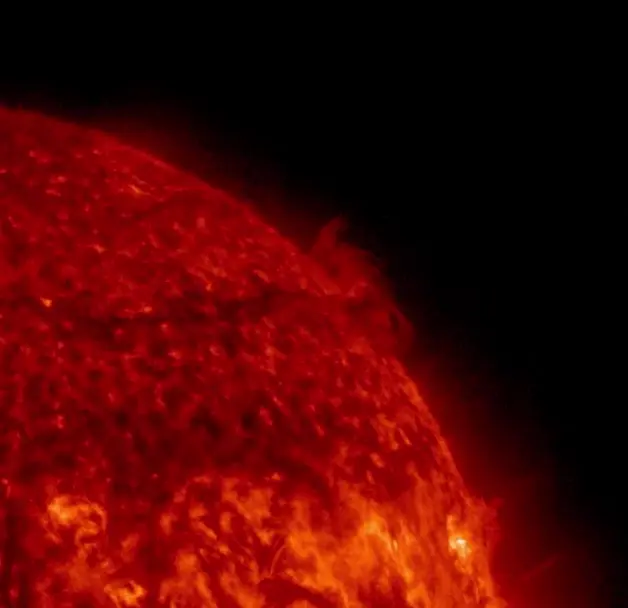
Sun news July 30: Eruptions in the west
(11 UTC to 11 UTC)
Today’s top story: As in the previous 24 hours, the sun produced only minor flares – but a high number of flares – over the past day. We saw 18 C (common) flares in all. Meanwhile, in the west – the side of the sun that’s rotating out of view – prominence activity has picked up. Here at Earth, conditions remain relatively quiet, but there’s a growing chance of geomagnetic activity. Read more below.
- Flare activity has been low again over the past 24 hours, with only C class faint flares. But, once again – replicating the previous day’s dramatic increase in flare production – the sun produced 18 C flares. The largest event was a C4.7 flare from active region AR4155 at 6:16 UTC on July 30. The lead flare producer was a newcomer as-yet-unnumbered region in the northwest. It produced 11 C flares.
- There are seven sunspot regions on the Earth-facing solar disk. AR4153 remains the largest in extent, but it didn’t produce any flares over the past day. AR4155 showed some growth. All the labeled active regions on the solar disk have a simple alpha or beta magnetic configuration, suggesting a calm day to come today.
- Blasts from the sun? No Earth-directed coronal mass ejections (CMEs) were observed in the available coronagraph imagery.
- Solar wind averaged around 380 km/s (850,036 mph) with a peak at 600 km/s (11,342,000) at 7:28 UTC on July 30, ending the period at 370 km/s (827,660 mph). The interplanetary magnetic field (IMF) strength stayed at a moderate level. The Bz component, which helps determine how much solar wind can enter Earth’s magnetosphere, remained north-oriented late in the period, but moved to south-oriented at around 3 UTC on July 30 up to the time of this writing (11 UTC on July 30).
- Earth’s magnetic field was quiet to unsettled (Kp = 1-3) in the past day.
What’s ahead? Sun-Earth forecast
- Flare activity forecast: The chance for M (moderate) flares is 30% today, and the chance for X (strong) flares is 5% today.
- Geomagnetic activity forecast: Unsettled-to-active conditions are anticipated on July 30, extending through July 31 as the solar wind from a northern hemispheric coronal hole high-speed stream (CH HSS) may start reaching us at Earth. If that connection occurs today, there is a slight chance of G1 (minor) geomagnetic storm intervals. A second chance for storm activity will return late on July 31, when Earth may begin interacting with the southern portion of the same coronal hole, though any effects are expected to be minor due to the hole’s smaller size. Stay tuned to see if plasma in the northern or solar wind lights up the night sky!
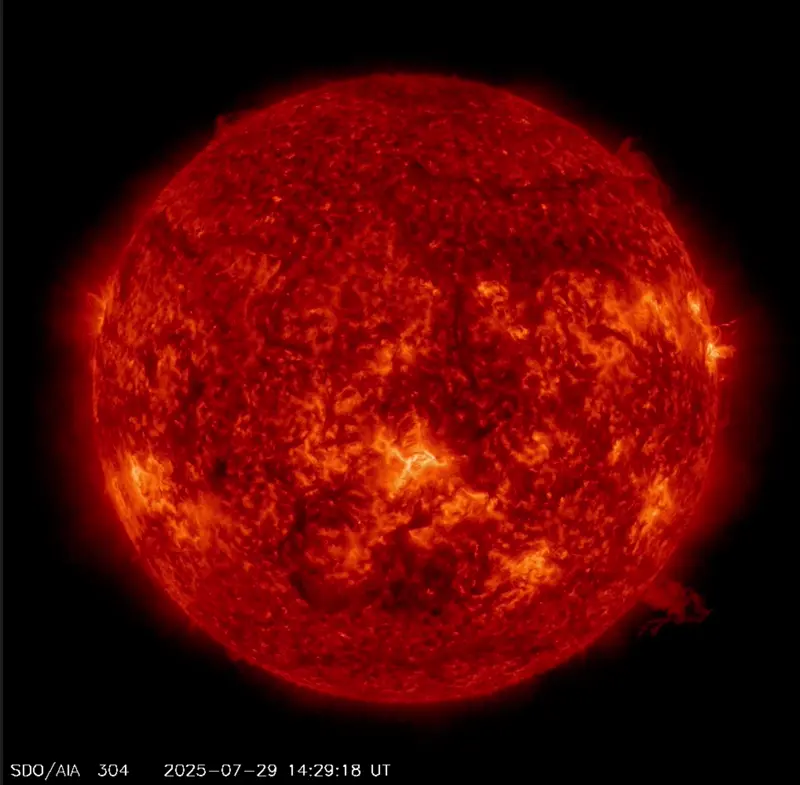
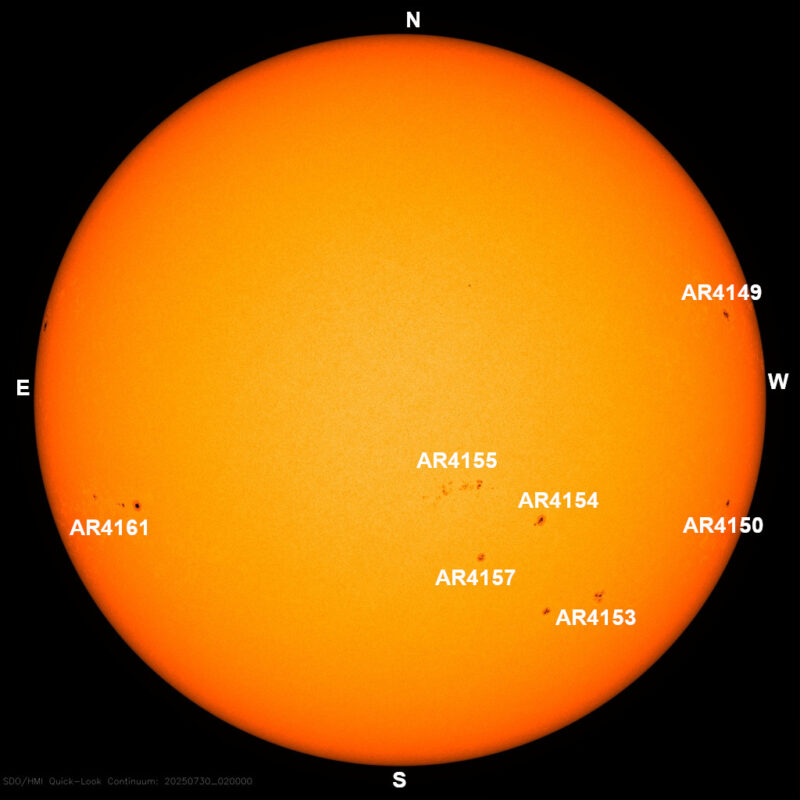
Sun news July 29: Flare count surges, solar wind on the way
(11 UTC to 11 UTC)
The number of sun flares surged dramatically over the past 24 hours, while the strength of the flares remained low. The sun produced 18 C-class (common) flares, a sharp increase from just four flares the previous day. This uptick suggests increased magnetic instability, even if no M-class (moderate) flares have occurred … yet. At the same time, a high-speed stream (HSS) from a northern coronal hole is forecast to become geoeffective (capable of affecting Earth) late today into July 30. It might get a boost from a smaller coronal hole, now rotating onto the Earth-facing side of the sun.
- Flare activity remained low over the past 24 hours, in terms of flare strength, but we saw a dramatic increase in flare production. Over the past day, the sun produced 18 C-class flares in contrast to the four the previous 24 hours. The largest was a C3.1 flare from active region AR4155 at 5:11 UTC on July 29. AR4155 was the lead flare producer of the period with five C flares.
- There are now 10 sunspot regions on the Earth-facing side of the sun. AR4153 is the largest in extent and was the 2nd lead flare producer of the past day, with four C flares. All the labeled active regions on the solar disk have simple alpha or beta configurations. There are two newcomers, AR4162 and AR4163 in the northwest quadrant.
- Blasts from the sun? No Earth-directed coronal mass ejections (CMEs) were observed in the available coronagraph imagery.
- Solar wind averaged around 360 km/s (805,297 mph), ending the period at 381 km/s (852,273). The interplanetary magnetic field (IMF) strength stayed low. The Bz component, which helps determine how much solar wind can enter Earth’s magnetosphere, remained predominantly south oriented. These are typical quiet solar wind conditions.
- Earth’s magnetic field has been quiet to unsettled (Kp = 1-3). The Kp index is 2 at the time of this writing.
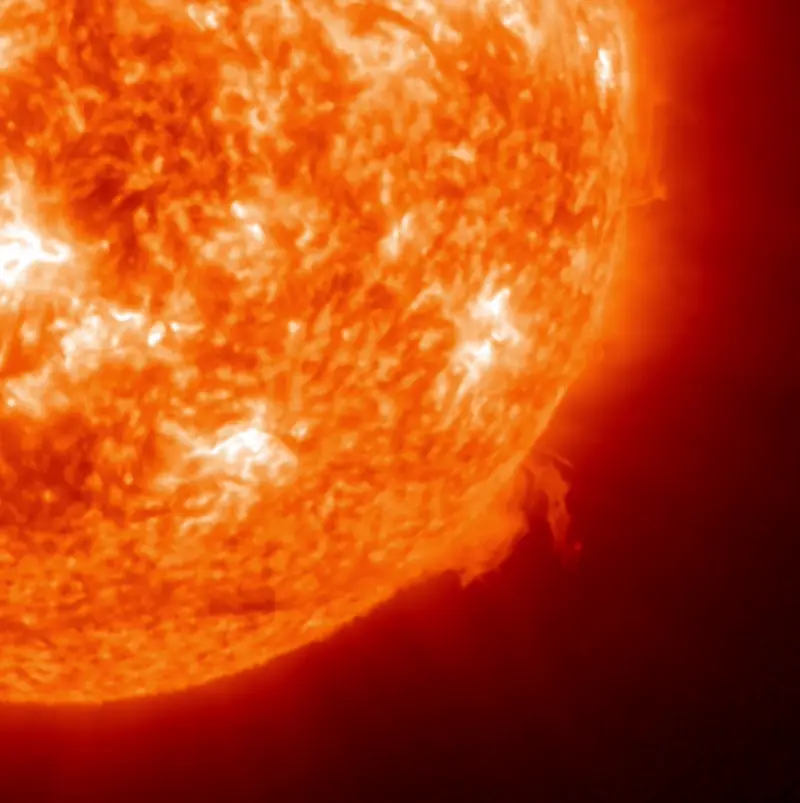

Sun news July 28: All quiet, but solar wind might pick up
(11 UTC to 11 UTC)
Our sun has been tranquil over the past 24 hours, with only a few C-class (common) flares popping off from its surface. The most significant of these was a C3.1 flare. Although no coronal mass ejection (CME) was detected, solar wind from a new coronal hole could stir up some geomagnetic activity in the next two to three days, brightening night skies at northerly latitudes with a dazzling display of auroras.
- Flare activity is low. We saw four C-class flares over the past day. The strongest was a C3.1 flare from Active Region 4161 at 18:32 UTC on July 27.
- There are currently ten sunspot regions on the Earth-facing disk. The most significant regions are AR4153 and AR4155. Active Region 4155 showed some redistribution of its leader spots, hinting at potential future activity.
- Blasts from the sun? While we’ve had flares, no significant Earth-directed coronal mass ejections (CMEs) were observed in the past day. This means we’re unlikely to see any major space weather storms from these events.
- Solar wind conditions decreased, ending the period around 412 km/s (921,618 mph). The interplanetary magnetic field (IMF) strength reached a moderate level before returning to a low level. The Bz component, which helps determine how much solar wind can enter Earth’s magnetosphere, remained predominantly positive. These are typical quiet solar wind conditions.
- Earth’s magnetic field has been quiet (Kp = 1-2). This calmness, however, may be the calm before the storm, as the incoming solar wind could stir up some geomagnetic activity.

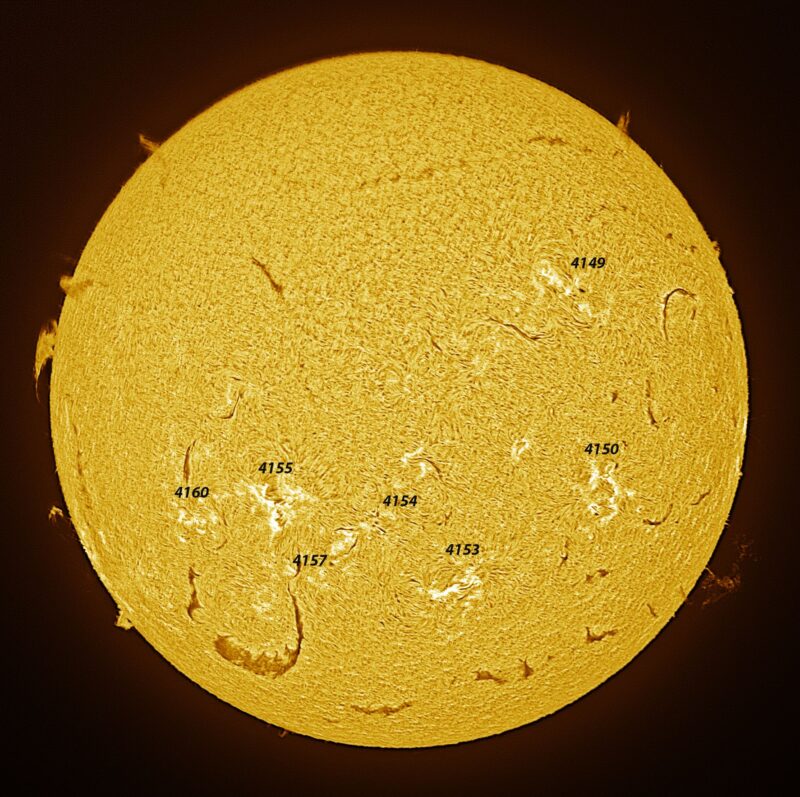
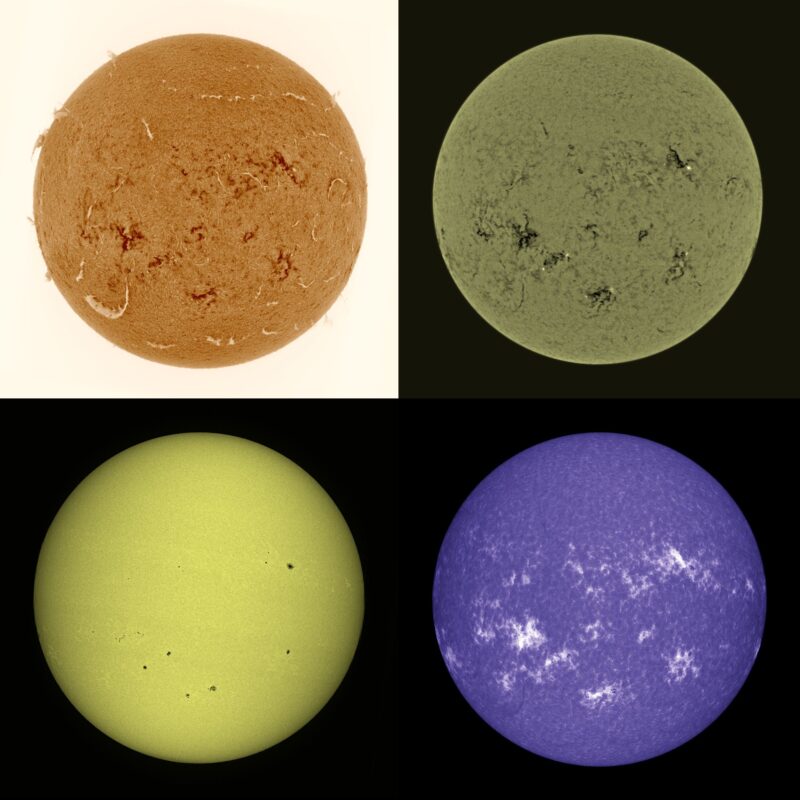
The sun in recent days
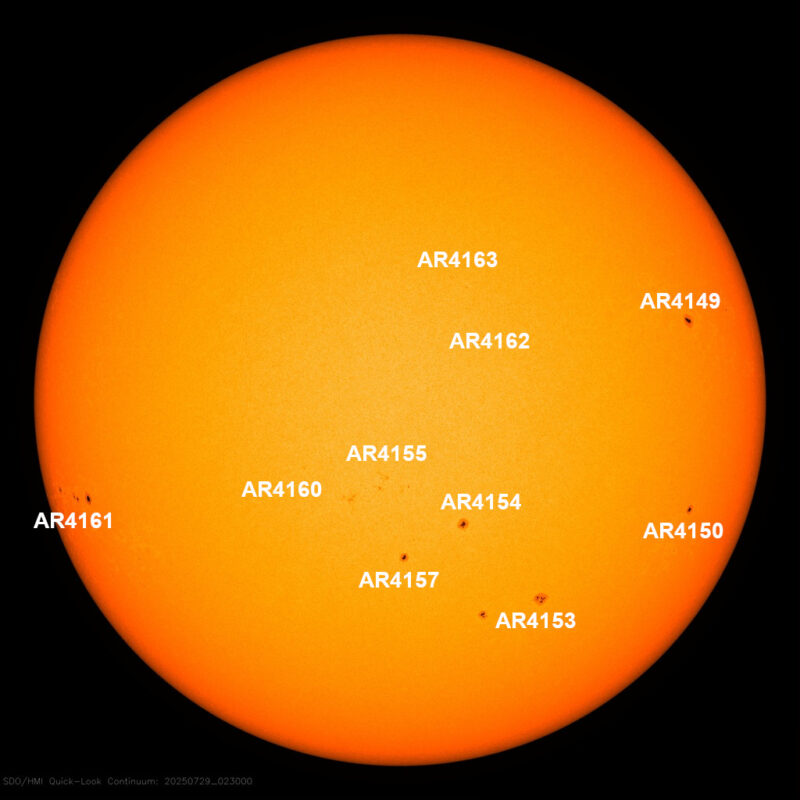

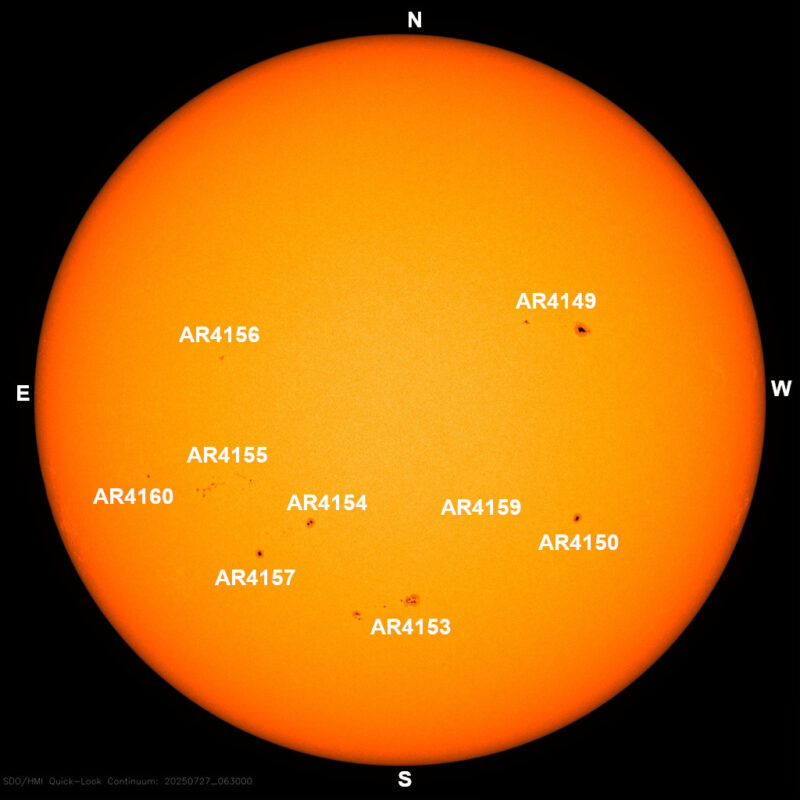
Earlier sun images
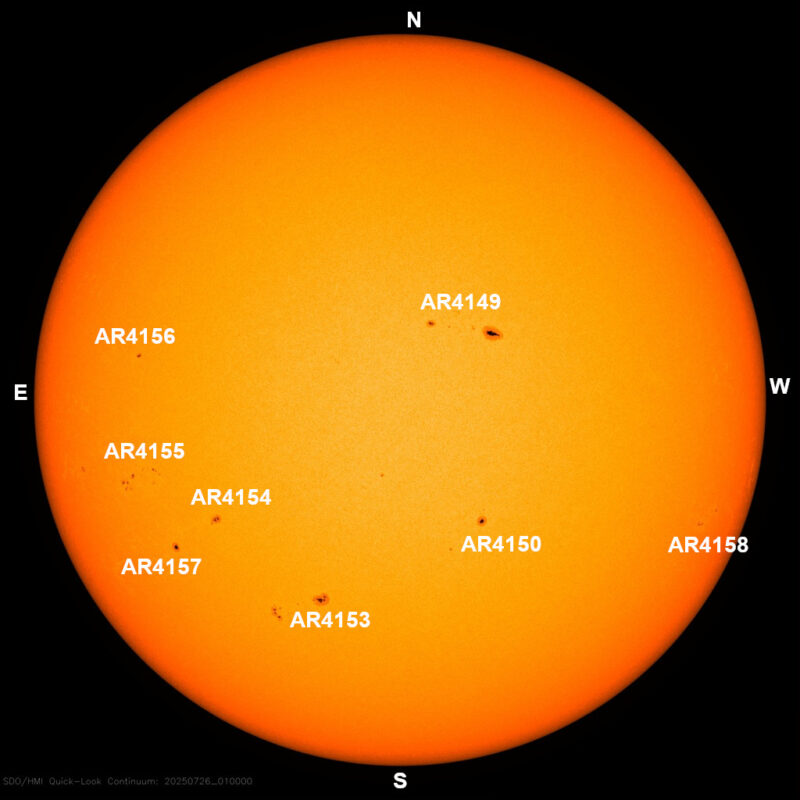
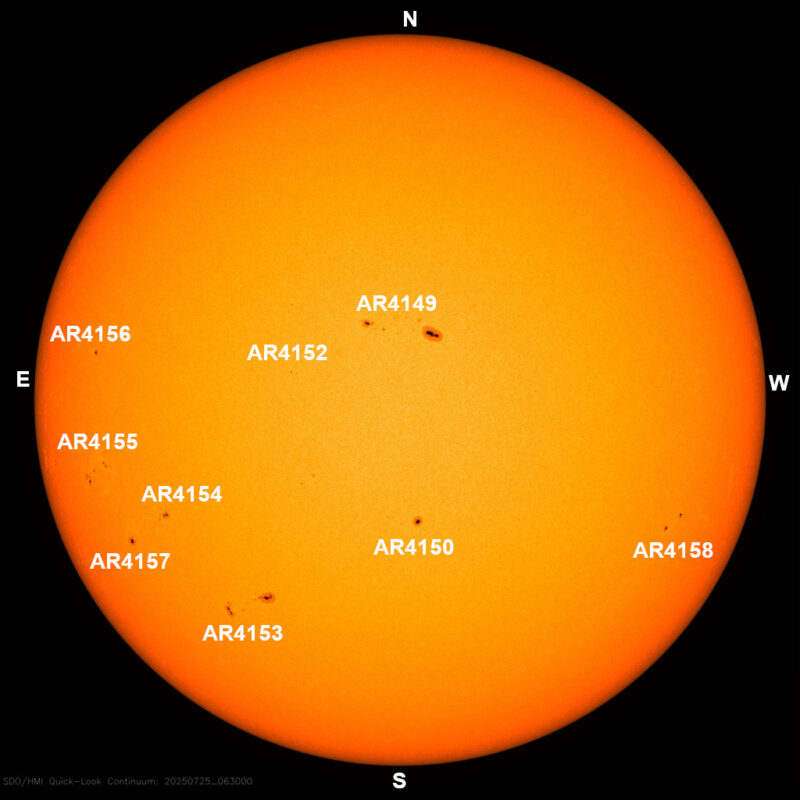
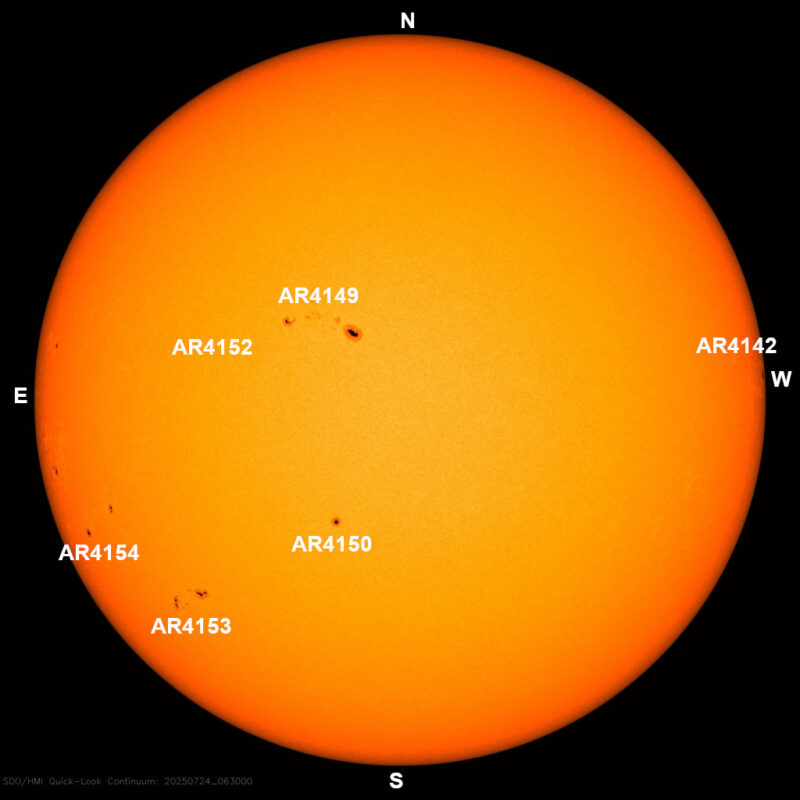
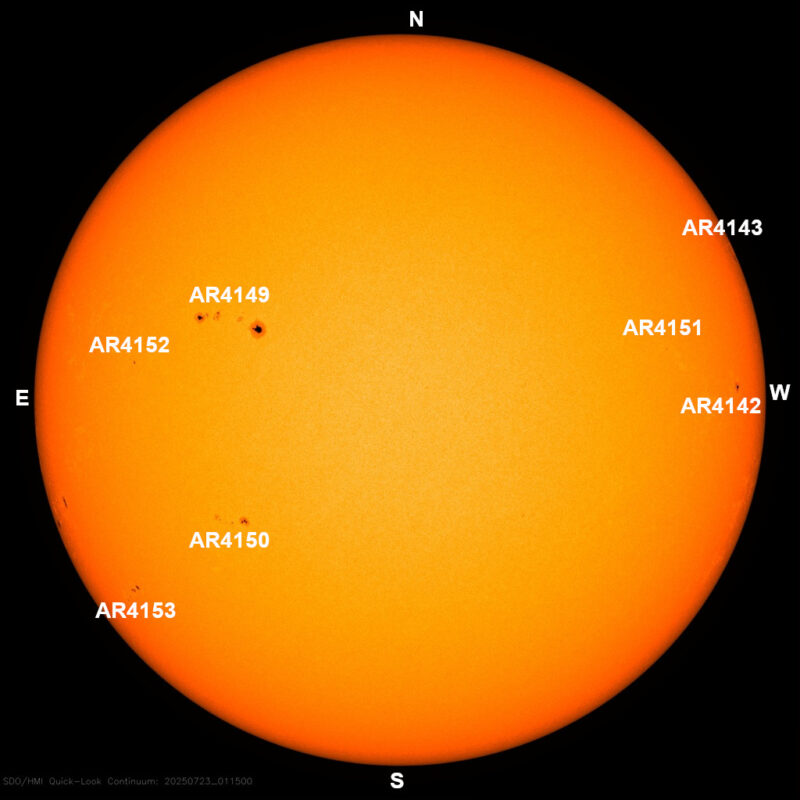
Sun images from our community
We sometimes feature sun images obtained using hydrogen-alpha filters. Read why.
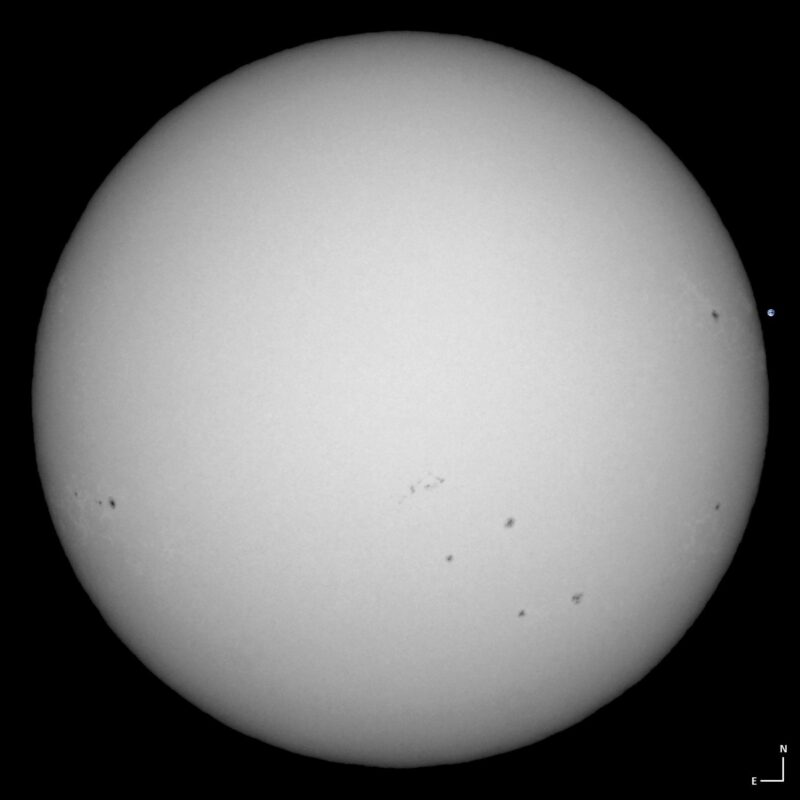
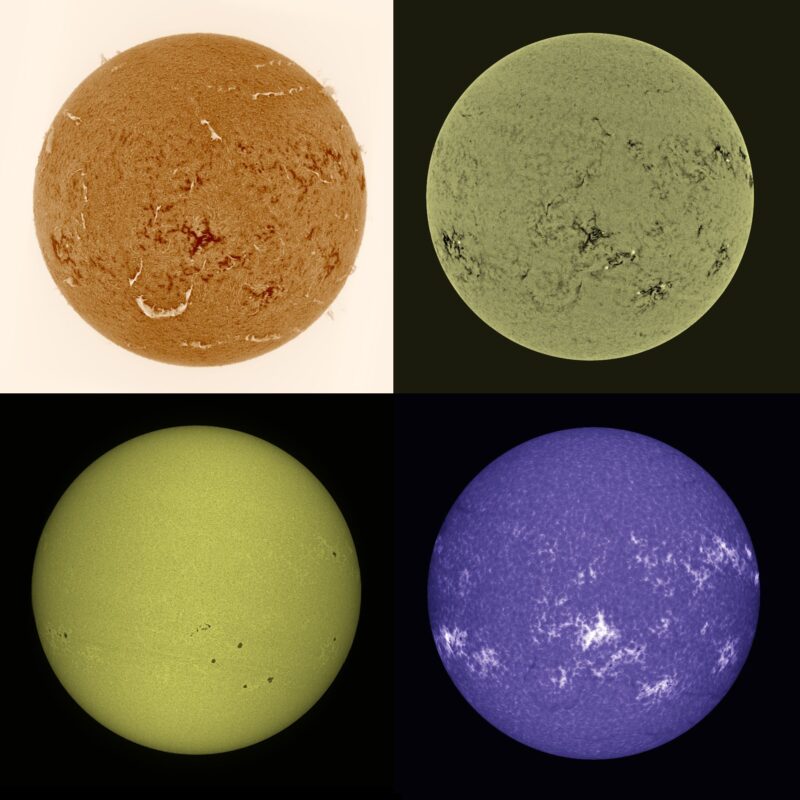
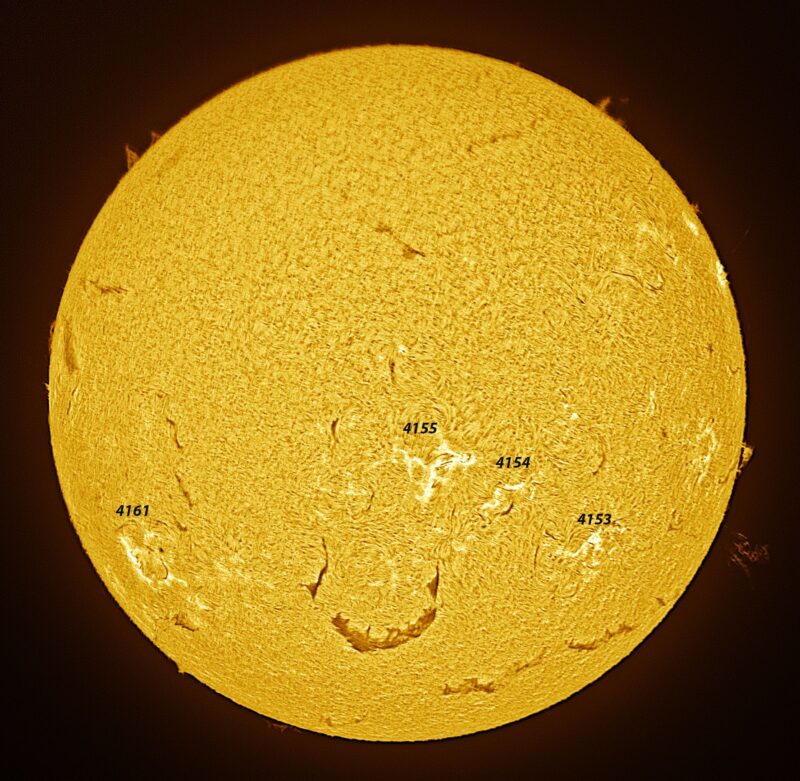
Bottom line: Sun news July 30, 2025. In the past day, we’ve seen lots of flares, but only C class. The sun’s western edge looks fiery!











